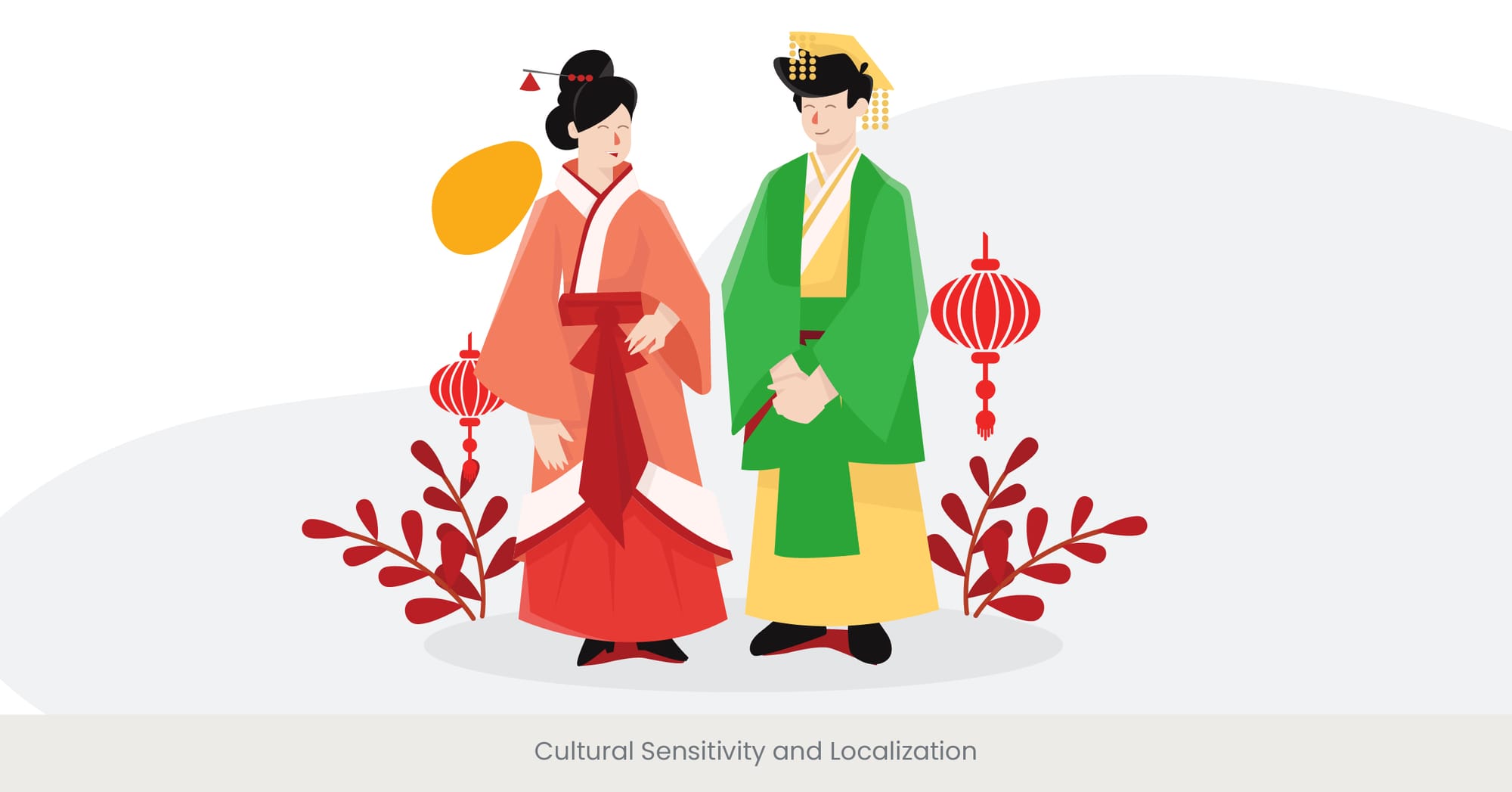
Cultural Sensitivity and Localization

Understanding the Importance of Cultural Sensitivity in Presentations
Cultural sensitivity and localization are critical components of tailoring presentations for global markets. When presenting new products to international audiences, it is essential to be aware of cultural nuances and preferences. This involves collecting feedback from the audience during presentations to understand how well your message resonates and what adjustments may be necessary. By creating clear messaging for product pitches that are culturally adapted, you can avoid misunderstandings and create a more impactful connection with your audience. Localization goes beyond mere translation; it encompasses modifying the entire presentation to align with local expectations and cultural norms.
Deep Dive into Cultural Sensitivity and Localization
Cultural sensitivity refers to the awareness and respect of cultural differences, while localization involves adapting content to fit the cultural and linguistic context of a specific market. These key elements are crucial when creating a product presentation for global audiences. Enhancing audience interaction in presentations through cultural relevance can significantly impact the effectiveness of your delivery. Compelling product narratives that reflect the values and traditions of your audience can also help strengthen engagement. Understanding cultural norms, values, and communication styles can transform a product pitch into a global success. Conducting thorough market research to understand these nuances is essential for delivering a presentation that resonates with your target audience, which is one of the best practices for product presentations.
Real-World Examples of Successful Localization
A notable example of successful localization is Coca-Cola’s "Share a Coke" campaign. The campaign involved printing popular local names on Coca-Cola bottles, which resonated deeply with customers in various countries. Another example is McDonald’s, which adapts its menu and marketing strategies to align with local tastes and preferences. Both Coca-Cola and McDonald's ensure clear messaging for product pitches that reflects the local culture, further enhancing audience interaction in presentations and product marketing. These examples highlight how cultural sensitivity and localization can improve product presentations and marketing strategies globally.
Research and References Supporting Cultural Sensitivity
According to a study by the Harvard Business Review, companies that prioritize cultural sensitivity and localization in their marketing efforts see a significant increase in customer engagement and brand loyalty. The study found that localized marketing campaigns are 1.5 times more effective than global campaigns. Collecting feedback from the audience during presentations is crucial for refining these campaigns. Additionally, research from the Content Marketing Institute indicates that adapting content to local markets can lead to a 20% increase in customer satisfaction. These findings underscore the importance of cultural sensitivity and localization in presenting new product ideas to global audiences, one of the best practices for product presentations.
Language Translation and Subtitling Options
Ensuring Effective Communication Through Translation and Subtitling
Language translation and subtitling are essential for creating effective and inclusive presentations for global audiences. When presenting new products to diverse markets, it is crucial to ensure that your message is understood by all audience members, regardless of their native language. By providing translations and subtitles, you can break down language barriers and enhance clear messaging for product pitches. This approach not only improves communication but also demonstrates your commitment to inclusivity and cultural sensitivity. Collecting feedback from the audience during presentations about translation clarity can further refine your approach.
Deep Dive into Translation and Subtitling Techniques
Translation involves converting your presentation's text and spoken content into the target language, while subtitling adds text overlays for spoken parts, making it easier for non-native speakers to follow along. For enhancing audience interaction in presentations, it’s essential that translations align with the cultural and linguistic context of your audience. Compelling product narratives told through properly localized content can significantly improve the impact of a product presentation. Using translation and subtitling tools or services helps streamline this process, ensuring that your product presentation best practices are upheld when targeting global markets.
Practical Applications and Examples
A great example of effective translation and subtitling is TED Talks. TED provides subtitles in multiple languages, making their content accessible to a global audience. This practice has significantly expanded their reach and engagement. Another example is Apple’s product launch events, which are subtitled in various languages to cater to their international customer base. These examples show how subtitling can enhance audience interaction in presentations, ensuring that your clear messaging for product pitches reaches a wider audience.
Research and References Supporting Translation and Subtitling
Research from the European Commission indicates that 90% of internet users in the EU prefer to browse in their native language. This highlights the importance of providing content in multiple languages to reach a broader audience and shows the significance of collecting feedback from the audience during presentations to understand language preferences. A study by Common Sense Advisory found that companies that invest in translation and localization are 1.5 times more likely to see an increase in revenue. These findings reinforce that translation and subtitling are vital best practices for product presentations, especially for international markets.
Adapting Visuals for Cultural Relevance

The Importance of Culturally Relevant Visuals
Adapting visuals for cultural relevance is crucial when tailoring presentations for global markets. Visual elements such as images, graphics, and color schemes play a significant role in how a message is perceived. When presenting new products to an international audience, it’s essential to ensure that these visuals resonate with the cultural context of the target market. Enhancing audience interaction in presentations through relevant visuals can make your product more appealing. By using culturally appropriate visuals, you can ensure clear messaging for product pitches that is both impactful and respectful.
Deep Dive into Culturally Relevant Visuals
Culturally relevant visuals are those that align with the customs, traditions, and aesthetic preferences of a specific market. This involves choosing images and graphics that reflect local culture and values. For example, the use of certain colors can have different connotations in various cultures—while white symbolizes purity in Western cultures, it is associated with mourning in some Asian cultures. Conducting market research and working with local designers ensures that your visuals align with best practices for product presentations. This helps create compelling product narratives that resonate on a deeper level with global audiences.
Real-World Examples of Visual Adaptation
A notable example of adapting visuals for cultural relevance is Coca-Cola’s marketing campaigns. In different countries, Coca-Cola adjusts its advertisements to reflect local customs and celebrations. This adaptation ensures clear messaging for product pitches that respects cultural preferences. McDonald’s also adapts its promotional materials to suit local tastes, enhancing audience interaction in presentations by appealing visually to the local market.
Research and References Supporting Visual Adaptation
Research from the Journal of International Marketing indicates that culturally adapted visuals significantly enhance customer engagement. This directly impacts collecting feedback from the audience during presentations, as feedback on visuals often informs future marketing strategies. These findings validate the importance of adapting visuals for cultural relevance when presenting new products globally.
Case Studies and Examples from the Local Market

Leveraging Local Case Studies for Effective Presentations
Incorporating local case studies and examples from the market is a crucial tactic to enhance the relevance of your product pitches. When delivering product presentations to a global audience, using case studies from specific regions helps establish credibility and make your messaging clear. These localized examples demonstrate how your product has positively impacted the target market, providing evidence of its effectiveness. This technique builds trust and ensures that your audience remains engaged with compelling product narratives that resonate with their environment.
The Role of Local Case Studies in Presentations
Local case studies act as powerful tools for showcasing real-world applications during product presentations. By providing detailed insights, they help your audience see exactly how your product has solved specific challenges and delivered measurable results in their region. This approach to clear messaging for product pitches not only highlights the practical benefits but also tailors the presentation to fit cultural and contextual nuances. Incorporating local success stories makes the presentation more relatable and impactful, which can significantly enhance audience interaction and boost credibility.
Real-World Examples of Using Local Case Studies
Procter & Gamble's marketing of Ariel detergent is a prime example of utilizing local case studies. P&G showcased Ariel's effectiveness by focusing on regional washing habits, leveraging local research. Another example comes from Apple, where the company often features local business success stories during product presentations—showing how the iPad was being used in schools and businesses across various countries. These compelling product narratives not only enhance the overall presentation but also offer best practices for localizing your product's message.
Research and References Supporting Local Case Studies
According to a study by Harvard Business Review, clear messaging for product pitches that includes local examples can increase audience trust by up to 67%. McKinsey & Company reports that localized case studies can boost product relevance by 50%, and the Content Marketing Institute found that using these examples leads to higher audience interaction and satisfaction. Incorporating best practices for product presentations by using local case studies ensures you're providing content that resonates deeply with your audience.
Modifying Product Features for Regional Needs

Adapting Products to Meet Regional Preferences
Tailoring product features to meet regional needs is an essential component of successful product presentations. Different markets come with unique preferences, and customizing product features can greatly enhance its appeal. This focus on adapting products to regional preferences ensures clear messaging during product pitches and demonstrates your company's attentiveness to local consumer behavior. By incorporating localized modifications into your compelling product narratives, you offer a more relatable and tailored experience to the audience.
The Importance of Regional Customization
Regional customization, when done right, aligns with best practices for product presentations and ensures the product resonates with specific markets. For example, McDonald’s customizes its menu in India with vegetarian options to cater to local dietary preferences. This adaptability strengthens the connection with local consumers, leading to better audience interaction. When presenting customized products, focusing on the specific benefits for each region can clarify your messaging and increase the product's acceptance in diverse markets.
Practical Applications and Real-World Examples
A notable example of modifying product features for regional needs is McDonald's. The fast-food giant customizes its menu to reflect local tastes and dietary preferences. In India, for instance, McDonald's offers a wide range of vegetarian options to cater to the local market, where a significant portion of the population follows a vegetarian diet. Similarly, Hyundai launched a modified version of its Creta SUV in India, featuring enhanced air conditioning and suspension systems to handle the country's hot climate and rough roads. These examples illustrate how companies can successfully adapt their products to meet regional needs, thereby increasing their appeal and market success.
Research and References Supporting Regional Customization
A report from the Journal of International Business Studies found that companies that customize products for local markets see higher satisfaction rates. Deloitte’s research supports this, showing a 30% increase in market share when products are adapted to regional preferences. These insights align with best practices for ensuring product presentations focus on addressing regional pain points and include compelling narratives that highlight product modifications. When done effectively, this approach maximizes audience engagement and trust.
Legal and Compliance Differences Across Countries

Navigating Legal and Compliance Challenges in Global Markets
Navigating legal and compliance differences is a key aspect of global product presentations. Legal and compliance regulations vary significantly from country to country, making it essential to understand and address these differences. Ensuring that your product pitch adheres to local regulations not only strengthens your message but also prevents costly errors. This approach helps maintain trust with your audience, providing clear messaging around the legality and safety of your product.
Deep Dive into Legal and Compliance Considerations
Legal and compliance considerations encompass a wide range of issues, including product safety standards, advertising regulations, data protection laws, and intellectual property rights. For example, the European Union has strict regulations regarding data protection (GDPR), which impact how companies collect and process personal data. In contrast, countries like the United States have specific regulations for product safety and marketing claims enforced by agencies like the FDA and FTC. Understanding these key elements is critical for creating a compliant product presentation and ensuring smooth market entry. Companies must also be aware of any local certifications or approvals required to sell their products in specific regions.
Real-World Examples of Compliance Challenges and Solutions
One notable example of navigating legal and compliance challenges is Tesla’s entry into the Chinese market. Tesla had to comply with China's stringent regulations on electric vehicles, including obtaining local certifications and adhering to specific safety and performance standards. Another example is Amazon, which faced challenges with data protection regulations in the European Union. To comply with GDPR, Amazon implemented robust data protection measures and revised its data processing practices. These examples illustrate the importance of understanding and addressing legal and compliance differences when presenting new product ideas and expanding into global markets.
Research and References Supporting Compliance Strategies
The International Business Review found that 60% of companies that face compliance challenges experience delays. McKinsey & Company emphasizes the importance of proactively addressing legal issues during product presentations, which helps build trust with regulators and consumers alike. These findings serve as a reminder to include legal and compliance considerations in your best practices for product presentations, enhancing the overall impact of your pitch.
Currency and Payment Method Considerations

Adapting to Local Currencies and Payment Methods
Understanding local currencies and preferred payment methods is crucial in facilitating smoother sales processes during product presentations. Adapting to local financial systems ensures that your product is accessible, fostering better audience interaction and making your product pitch more effective. Clear messaging about pricing and payment options strengthens trust and removes barriers to purchase.
The Importance of Currency and Payment Adaptation
Companies like Airbnb and Amazon offer localized pricing and payment methods, demonstrating best practices for product presentations. By providing familiar payment solutions, these companies ensure that their global audience feels comfortable and understood, improving conversion rates. Implementing similar strategies in your presentations can boost audience interaction and drive better results.
Real-World Examples of Currency and Payment Adaptation
A prime example of adapting to local currencies and payment methods is Airbnb. The company offers localized pricing in multiple currencies and supports various payment methods to cater to its global customer base. For instance, in China, Airbnb accepts payments through Alipay and WeChat Pay, which are popular payment methods among Chinese consumers. Another example is Amazon, which provides localized versions of its website for different countries, displaying prices in the local currency and offering various payment options such as local credit cards, bank transfers, and digital wallets. These examples illustrate how adapting to local financial practices can enhance customer satisfaction and drive sales.
Research and References Supporting Financial Adaptation
Research from the Boston Consulting Group highlights that companies that adapt to local currencies and payment methods see a significant increase in customer conversion rates. The study found that 70% of consumers prefer to shop in their local currency and with familiar payment methods. A report by PwC emphasizes that offering localized payment options can reduce cart abandonment rates and improve customer trust. Additionally, data from Statista indicates that mobile payment adoption is growing rapidly in many markets, making it essential for businesses to support these payment methods. These findings validate the importance of considering currency and payment method adaptations when presenting new product ideas to global audiences.
Timing Your Presentation for Global Audiences

Strategically Timing Your Product Presentation
Strategically timing your product presentation for global audiences is crucial for maximizing engagement and ensuring that your message reaches the right people at the right time. Whether it's clear messaging for product pitches or enhancing audience interaction in presentations, different time zones, cultural events, and local holidays can all impact the effectiveness of your product launch. By strategically planning the timing of your presentation, you increase the likelihood of success while accommodating the schedules of your target audience across the globe.
For businesses ready to take their global product presentations to the next level, partnering with experts who understand the nuances of global markets is crucial. Let INK PPT help you strategically time and tailor your presentations for maximum impact.
The Importance of Timing in Global Markets
When presenting new products to global audiences, considering time zones, local events, and holidays is essential. Hosting a live presentation that coincides with peak hours in each region can boost audience interaction in presentations. Aligning your product launch with major cultural events can leverage the festive atmosphere and enhance your compelling product narratives, ensuring your product is in the spotlight at the right moment. Global audiences expect clear messaging for product pitches, so strategic timing can significantly increase engagement and buy-in.
Real-World Examples of Effective Timing
Brands like Apple and Netflix have mastered the art of strategically timing product presentations. Apple’s globally synchronized launches ensure that audience interaction remains high across regions. Similarly, Netflix’s content releases cater to various time zones, enhancing both product visibility and audience interaction during presentations. These brands exemplify how best practices for product presentations involve not just great content but also perfect timing.
Research and References Supporting Strategic Timing
Research from Harvard Business Review and McKinsey emphasizes how timing impacts compelling product narratives and overall success. Studies indicate that product presentations timed to coincide with local schedules result in higher engagement, helping brands collect valuable feedback from the audience during presentations. Businesses that adopt best practices for product presentations, including time zone planning, experience up to 25% increased participation.
Curious about how businesses have successfully presented their products on a global stage? Dive into our case studies to see real-world examples of how INK PPT has helped companies achieve impactful presentations across markets.
Utilizing Local Influencers or Brand Ambassadors

Leveraging Local Influencers for Effective Product Presentations
Local influencers bring your product presentation closer to the heart of the market. They can help you deliver clear messaging for product pitches that resonates with the audience, leveraging their established credibility to enhance audience interaction. By partnering with influencers, you not only strengthen your compelling product narratives but also ensure that local contexts and preferences are respected.
The Role of Influencers and Ambassadors
When presenting globally, incorporating best practices for product presentations includes involving local influencers who understand the audience. They can deliver product pitches with clarity, adapting your messaging to ensure it is culturally relevant. These influencers can enhance audience interaction in presentations by creating content that speaks to local trends and preferences, and collecting feedback from the audience becomes easier and more organic through these relationships.
Real-World Examples of Influencer Collaborations
Nike and Glossier both use local influencers to promote product launches in various markets. For example, Nike’s collaboration with marathon runner Yuki Kawauchi for the Japanese market tailored their compelling product narratives to local values of endurance and perseverance. Influencers boost audience interaction during presentations by bringing their personal touch to product demos, which makes collecting valuable feedback from the audience during presentations more straightforward.
Research and References Supporting Influencer Strategies
The Digital Marketing Institute shows that influencer campaigns generate up to 11 times more ROI than traditional marketing methods. Partnering with local figures helps refine your clear messaging for product pitches and boosts engagement, with studies showing up to a 50% increase in participation. These partnerships are also key in collecting feedback from the audience during presentations, ensuring your product resonates with various global markets.
Stay ahead of the curve with actionable insights and strategies from INK PPT.
Subscribe to our blog to receive regular tips on enhancing your global product presentations and leveraging the latest trends.
Feedback Loops with Local Teams

Establishing Effective Feedback Loops for Global Presentations
Working closely with local teams helps ensure that your product presentation reflects market preferences. Feedback loops allow you to refine best practices for product presentations, making them more effective by incorporating insights from those who understand the target audience best. This can involve adapting your compelling product narratives to better resonate with local culture and expectations.
The Importance of Local Feedback
Local teams offer invaluable insights into regional customer behavior and competitive landscapes. This feedback enhances clear messaging for product pitches and helps in collecting feedback from the audience during presentations. Regular feedback sessions and iterative reviews ensure that your product presentation aligns with local values and maximizes audience interaction.
Real-World Examples of Effective Feedback Integration
Coca-Cola’s "Share a Coke" campaign is an example of how local feedback loops can refine a global product presentation. Local teams helped adapt the campaign for various markets, improving audience interaction during presentations and making the product more relatable to specific cultures. Similarly, Unilever uses feedback from local teams to enhance their compelling product narratives and increase relevance, boosting both audience engagement and the effectiveness of their presentations.
Research and References Supporting Feedback Loops
Studies from Harvard Business Review highlight that companies incorporating local feedback experience a 20% increase in responsiveness and customer satisfaction. Feedback from local teams is key to following best practices for product presentations, ensuring that clear messaging is delivered in a way that resonates with each audience. Incorporating feedback also makes collecting audience feedback during presentations smoother, as the product message is already aligned with local expectations.
Unlock the potential of local influencers in your target markets. INK PPT’s experts can help you identify the right voices to amplify your product's message and drive local engagement.
Frequently Asked Questions
1. How do you present a new product effectively?
To present a new product effectively, start by understanding your audience and their needs. Develop a compelling narrative that highlights the product's unique value proposition and benefits. Use a well-designed presentation template that incorporates stunning visuals and clear, concise information. Practice delivering your presentation to ensure smooth communication and engage your audience with interactive elements like demos or Q&A sessions.
2. How to introduce a new product?
Introducing a new product involves several key steps: conduct thorough market research to understand the target audience, create a strategic launch plan, and develop marketing materials that highlight the product’s features and benefits. Use a combination of online and offline channels to reach your audience, including social media, email campaigns, and events. A multilingual product presentation can help engage a global audience effectively.
3. What is a good product presentation?
A good product presentation is clear, engaging, and tailored to the audience. It should include key elements such as a strong opening, a detailed explanation of the product's features and benefits, and real-world examples or case studies. High-quality visuals and a well-organized slide deck enhance the presentation. Ensure that the core message is communicated effectively and that the presentation concludes with a strong call to action.
4. How to present a product launch?
To present a product launch, start by creating excitement and anticipation through teaser campaigns. During the launch event, use a professional slide deck to guide the presentation. Highlight the unique value proposition, showcase the product's features through demos or videos, and include customer testimonials. Ensure that the event is accessible to a global audience by considering time zones and providing translation or subtitling options.
5. How do you present a new product concept?
Presenting a new product concept involves clearly articulating the idea, its benefits, and how it addresses a market need. Use visuals, prototypes, or mock-ups to illustrate the concept. Explain the development process, market research findings, and potential impact. Engage the audience by encouraging feedback and discussion to refine the concept further.
6. How do you present a new product sample?
When presenting a new product sample, provide a comprehensive overview of its features and benefits. Allow the audience to experience the product firsthand if possible. Highlight real-world applications and success stories that demonstrate its value. Collect feedback from the audience to understand their perceptions and address any concerns.
7. How do you create a new product presentation?
Creating a new product presentation involves several steps: research your target market, define the core message, and outline the key points you want to cover. Design a visually appealing slide deck that includes high-quality images, graphics, and concise text. Practice delivering the presentation to ensure clarity and confidence. Tailor the presentation to different audiences by adjusting the content and delivery style as needed.
8. How do you make a bilingual presentation?
To make a bilingual presentation, provide translations of all text elements in both languages. Use subtitling for spoken parts or consider dubbing. Ensure that the visuals and layout support the bilingual format without cluttering the presentation. Practice delivering the presentation in both languages, focusing on clear and accurate communication. Consider using professional translation services to maintain quality and consistency.
9. What is multilingual content marketing?
Multilingual content marketing involves creating and distributing marketing materials in multiple languages to reach a diverse audience. This strategy includes translating website content, social media posts, blogs, and promotional materials. Multilingual content marketing helps businesses engage with customers in their native language, increasing relevance and improving customer experience. It also involves cultural adaptation to ensure that the content resonates with each target market.
10. What do you do with coffee table books?
Coffee table books can be used in various ways. They are often displayed on coffee tables as decorative pieces that reflect the owner's interests and style. In corporate settings, they can enhance waiting areas and serve as conversation starters. Additionally, businesses use coffee table books for business promotion, client engagement, and as high-value corporate gifts.


%20(1).jpg)
%20(1).jpg)


